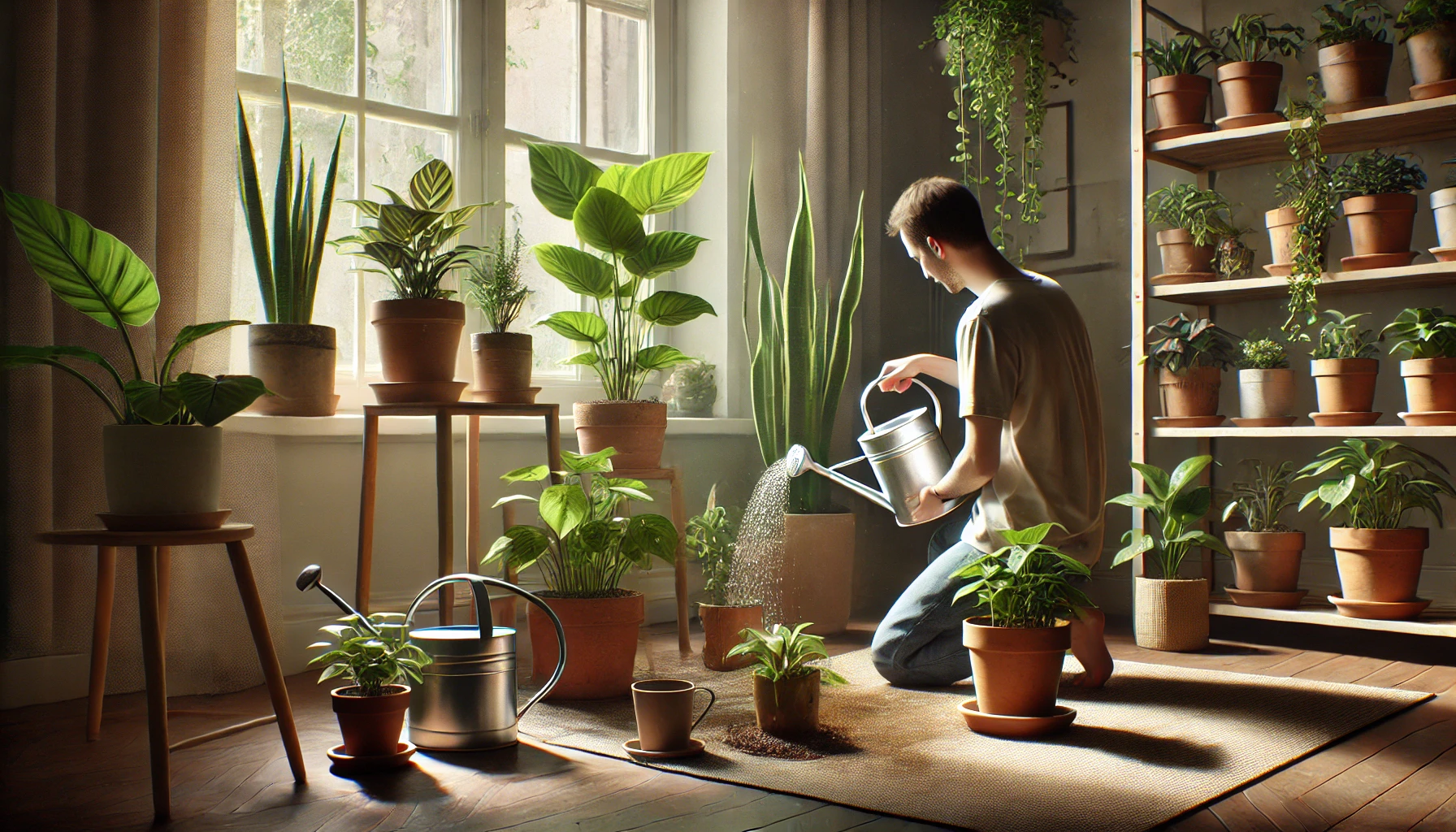When it comes to plant care, watering seems like the simplest task. Just pour water in, and you’re done. Right? Not exactly. Most plant problems — like yellow leaves, root rot, or stunted growth — are often caused by how we water, not how much. The truth is, watering correctly means understanding timing, technique, and the plant’s environment, not just sticking to a weekly schedule.
In this guide, you’ll learn how to water your plants the right way — based on their real needs — so they stay healthy, strong, and thriving.
Why Watering Isn’t Just About Frequency
Watering once a week may work for some plants, but it’s not a one-size-fits-all rule. Your plant’s water needs depend on several factors, including:
- Type of plant
- Size of the pot
- Type of potting mix
- Humidity and temperature
- Time of year
- Light exposure
That’s why some people overwater and others underwater — even if they follow the same routine. The solution? Stop relying on your calendar and start reading the soil.
How to Know When Your Plant Actually Needs Water
Before you pick up that watering can, check the soil. Use the finger test: stick your finger about 2 to 5 cm (1 to 2 inches) into the soil.
- If it feels dry at that depth, it’s time to water
- If it’s still moist, wait a few days
You can also lift the pot to feel its weight. A dry pot will feel much lighter than a well-hydrated one.
For even more accuracy, consider using a moisture meter, especially for large or sensitive plants.
Different Plants, Different Needs
Here’s a general idea of how often popular indoor plants usually need water:
- Succulents & cacti: Every 2–3 weeks
- Snake plant & ZZ plant: Every 10–14 days
- Pothos, philodendron, monstera: Every 5–10 days
- Ferns & calatheas: Every 3–5 days (they love humidity)
- Peace lily: When the leaves droop slightly
Always double-check with the soil first — and remember: it’s better to underwater than overwater.
Use the Right Technique
How you water is just as important as when you water. Follow these best practices:
- Water slowly and deeply until it runs out the drainage hole
- Let the excess water drain completely — never let your plant sit in standing water
- Empty saucers or trays after watering
- Water at the base of the plant, not on the leaves
- For sensitive plants, use room temperature water
Avoid “light sips” that only moisten the top of the soil — they encourage shallow roots and weak plants.
Top vs. Bottom Watering
There are two main methods of watering houseplants:
Top watering: Pour water over the soil until it drains below. Most common and effective when done properly.
Bottom watering: Place the pot in a bowl or tray with water. The soil absorbs moisture through the drainage holes. Leave it for about 15–30 minutes, then remove and let excess water drain.
Bottom watering is great for plants that are prone to fungus or that have compacted soil. But don’t rely on it exclusively — top watering helps flush out salts and buildup.
Be Mindful of the Season
Watering needs change with the seasons. In spring and summer, plants are actively growing and usually need more water. In fall and winter, most houseplants slow down and require less.
- During winter, reduce watering by 30–50% for most plants
- Only water when the topsoil is dry, regardless of the season
- Consider humidity levels — heated rooms often dry plants out faster
If you’re unsure, always wait an extra day. A thirsty plant can bounce back. A soggy one? Not so easily.
Consider Pot Size and Type
The type and size of the pot you use directly affects watering needs.
- Terracotta pots dry out faster — perfect for succulents
- Plastic and ceramic pots retain more moisture
- Larger pots hold more soil and dry out slower
- Small pots dry out quickly and need more frequent checks
Make sure your pot always has a drainage hole. No matter how careful you are, a pot without drainage is a ticking time bomb for root rot.
Signs You’re Watering Incorrectly
Too much water:
- Yellowing or mushy leaves
- Moldy soil surface
- Fungus gnats
- Wilting even though the soil is wet
Too little water:
- Dry, crispy leaf tips
- Drooping or curling leaves
- Soil pulling away from the pot’s edge
- Slow growth
If you notice problems, check the soil and adjust before making big changes.
Humidity and Misting
Some plants, like calatheas, ferns, and prayer plants, crave high humidity in addition to regular watering.
You can support these plants by:
- Using a humidifier
- Placing plants on a pebble tray with water
- Grouping plants together to increase local humidity
- Misting occasionally — but don’t rely on misting alone
Note: Misting is not the same as watering and doesn’t hydrate roots — it’s just a way to help with air moisture.
Water Quality Matters Too
Tap water is fine for most plants, but sensitive species (like calatheas or peace lilies) may prefer:
- Filtered water
- Distilled water
- Rainwater (if clean)
Fluoride, chlorine, or high salts in tap water can cause browning tips or stunted growth in delicate plants.
Final Thoughts: Water Smarter, Not More
Good watering is a rhythm — not a routine. Once you start observing instead of guessing, your plants will reward you with strong roots, lush foliage, and long-lasting health.
It’s not about watering on time — it’s about watering when the plant needs it, and in a way that supports its natural growth.
So next time you reach for the watering can, pause for a second. Touch the soil. Look at the leaves. Let the plant guide you — and you’ll rarely go wrong.
